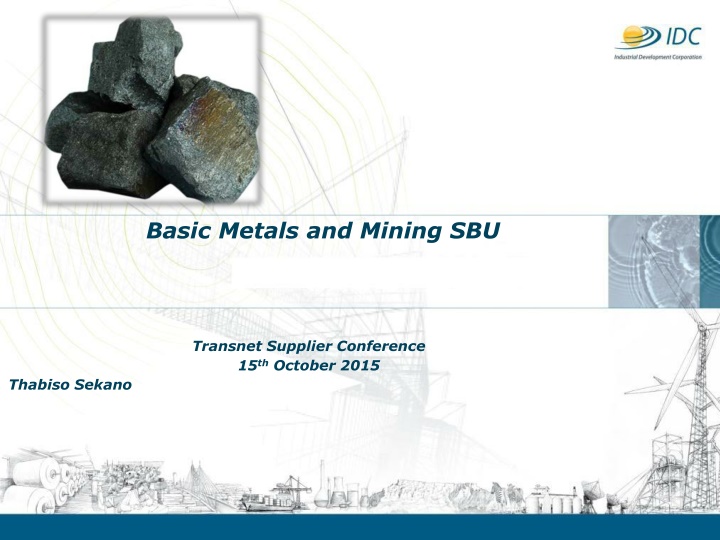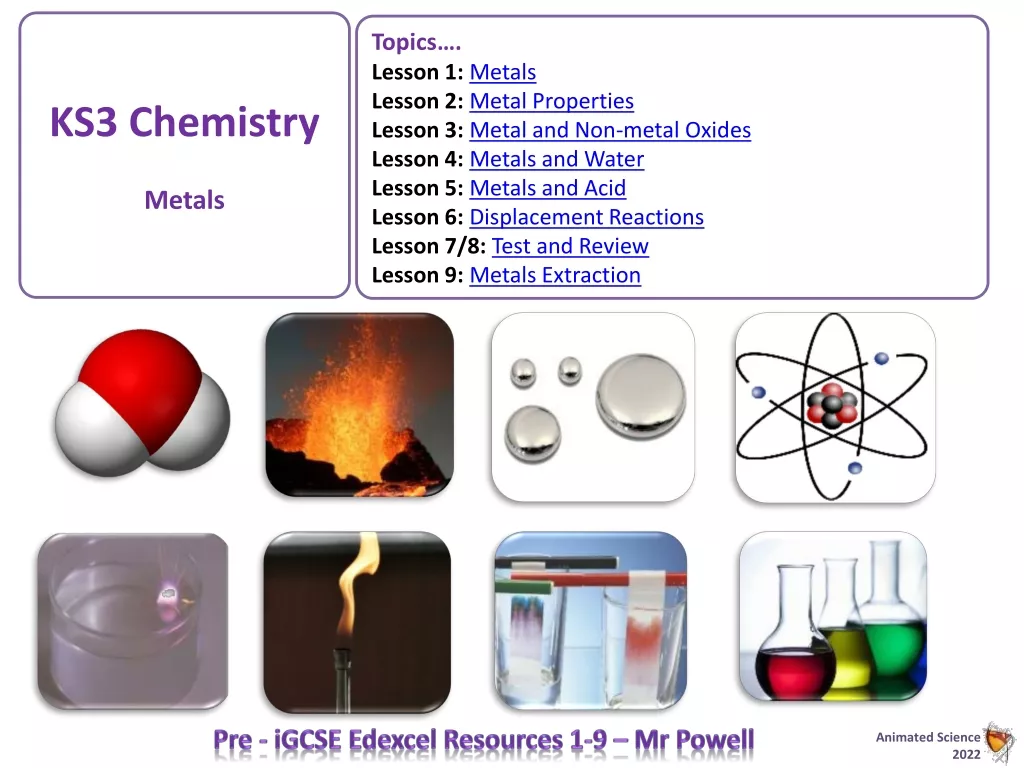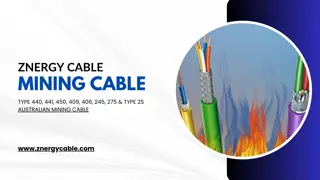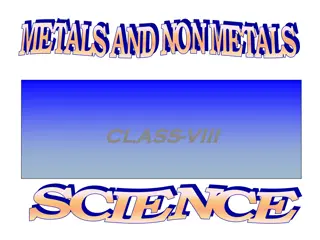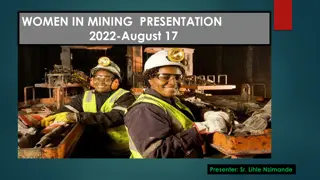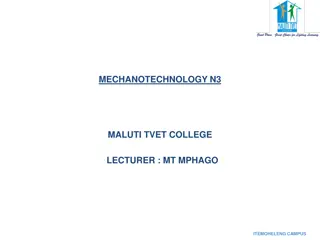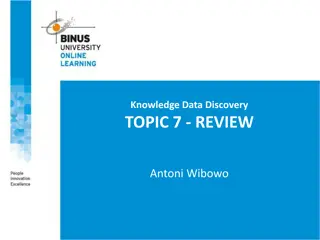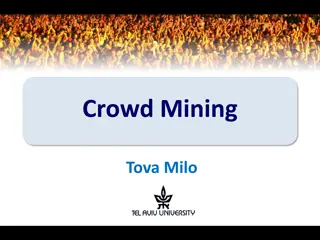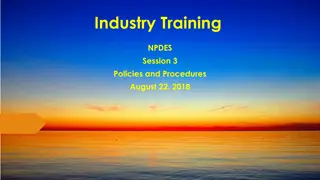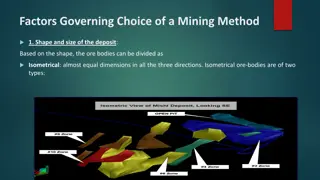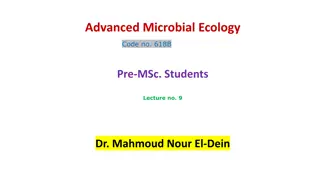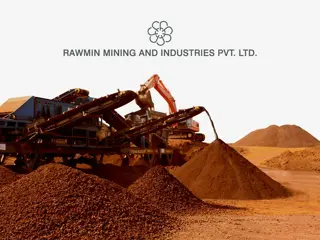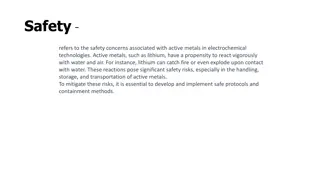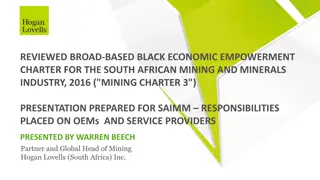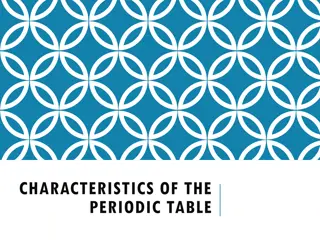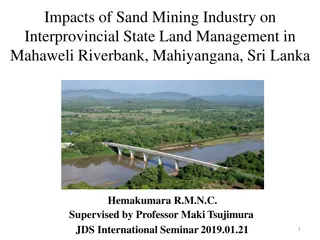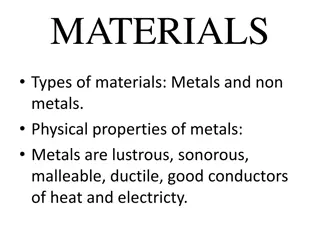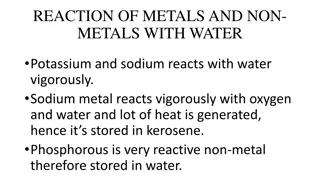Basic Metals and Mining SBU
The IDC Metals Value Chain aims to develop a competitive local metal products industry and strong export markets. The Mining and Basic Metals unit focuses on deal making and project management, with expertise in project initiation and development, partnering with investors, and funding opportunities. Goals include improving production facilities, financing foundry construction, and enhancing technological advancements within the sector. Strategies for 2015/16 involve ensuring competitiveness in downstream sectors and increasing production of metals and minerals in South Africa and the rest of Africa.
Download Presentation

Please find below an Image/Link to download the presentation.
The content on the website is provided AS IS for your information and personal use only. It may not be sold, licensed, or shared on other websites without obtaining consent from the author.If you encounter any issues during the download, it is possible that the publisher has removed the file from their server.
You are allowed to download the files provided on this website for personal or commercial use, subject to the condition that they are used lawfully. All files are the property of their respective owners.
The content on the website is provided AS IS for your information and personal use only. It may not be sold, licensed, or shared on other websites without obtaining consent from the author.
E N D
Presentation Transcript
Basic Metals and Mining SBU Transnet Supplier Conference 15th October 2015 Thabiso Sekano DRAFT
The Goal of IDCs Metals value chain is to assist in developing a competitive and diversified local metal products industry that effectively utilizes capacity to produce a significant portion of metal products consumed in SA, in addition to developing strong export markets The Mining and Basic Metals unit is one of three business units that make up the Basic Metals value channel. The unit is headed by Mazwi Tunyazwi and comprises 14 dealmakers made up of Engineers, Metallurgists, Chartered Accountants, and Geologists DRAFT
Our Strengths DRAFT
Business Unit Strengths Balanced mix of experience in deal making and project management In-house skills in project initiation and development Ability to partner and co-invest with both local and international investors Ability to co-fund with other lenders (both local and international) Wealth of experience and institutional knowledge of the RSA mining and metals industry 4
Our Goals Identify and finance areas of process improvements and projects within production facilities necessary to improve yield and align efficiency with global standards Finance related foundry construction / capacity expansion Co-finance studies with private sector that identify and plan exploitation of cheaper inputs, Invest to build new / upgrade facilities aimed at localizing production of high demand products Finance technological improvements within sector aimed at increasing production of higher grade steel 5
2015/16 Strategies DRAFT
Sector Strategy Overview Ensure globally/domestically competitive downstream of: Automotive, machinery &equipment, fabricated metals Value Chain Goal* A globally competitive and diversified local basic metal and mineral resource industry that effectively utilizes capacity Industry to produce a significant portion of metals products and minerals consumed in RSA and RoA , in addition to Development Goal* developing increased export of value added minerals Opportunity Increase Production of non ferrous metals Leader: Nina Yose Increase local production of Iron, Steel and related inputs Leader:Christian Carstens Increase steel scrap recycling capacity and milling capacity Leader:Inderasen Naidoo Increase Local production of ferroalloys Leader:Washingt on Musara Development of Large mines Leader:Kevin Hodges Development of strategic mineral and beneficiation Leader:Kevin Hodges Opportunity sub-sector Aluminium Rod production Copper Rod Production Automotive body panel aluminium production Masorini Iron and Steel production Coking coal mining in RSA/SADC Production of thin gauge stainless steel Scrap recycling Mini Mills Foundry Modernisation Improve Scaw s competitivenes s Manganese Mining and beneficiation Ferrochrome mining and beneficiation Ferro-nickel mining and beneficiation Precious Metals Natural Gas mining Bulk Commodities New Industry s minerals Production of Phosphate and Potash Coal Mining Industrial minerals Uranium Intended impact on the industry Security of raw material supply/lower input costs to the up stream industries Lower input costs of steel and increase competition/ competitiveness of up stream industries and increase exports Lower input costs to up stream industry and improve competitiveness of foundry industry Increase the supply of downstream ferro- manganese, ferro-chrome, ferro-nickel ore and exports Increase exports, create sustainable employment and reduce RSA deficit Increase supply to the upstream industry, energy security and import replacement and exports 7
Sector Strategy Overview Metals Value Chain Basic metals Value chain goal Industry development goal Ensure globally/domestically competitive downstream manufacturing of: Automotive, machinery & equipment, fabricated metals A competitive local steel and metal industry that produces basic metals at prices and quality that stimulate growth of downstream industries Proactive Opportunities Opportunity Steel and related inputs/Fabricated products flat and long steel Scrap and scrap replacements, e.g. pig iron, billets Foundries (brake drums, pumps) and mini mills Intended impact on the industry Production of basic metals at prices and quality at competitive prices Reduction of major input cost EAF operators, and mini mills Improving the quality and competiveness of suppliers to downstream industries Contribution to industry Goal Reduce prices of relevant products to downstream industries Reduce prices of relevant products to downstream industries Reduce prices of relevant products to downstream industries Size of funding opportunities (2016-2026) (R m) Steel related projects: R7.86bn Scrap replacement projects: R840m Mini-mills and foundries modernisation: R2.52bn Largest constraints Availability and cost of electricity, EIA approvals, Logistic costs Availability and cost of electricity, scrap availability Availability and cost of electricity, scrap availability Stakeholders Steel Fabricators, SEIFSA, Labour, Gvt, merchants Reactive areas of funding EDD, dti, SEIFSA, EAF operators, Foundries Steel Fabricators Opportunity Metal scrap process and standard long products e.g re-bar, chains, ropes etc Smelted products e.g Ferroalloys, Hot-rolled products Size of funding opportunities (2016-2026) (R m) Size of funding opportunities refer to IDC s funding R1.7bn R3.38bn
Sector Strategy Overview Metals Value Chain Metal Products Value chain goal Industry development goal Ensure globally/domestically competitive downstream manufacturing of: Automotive, machinery & equipment, fabricated metals A competitive local metal products industry that substitute imports and can increase exports to SADC and RoA Proactive Opportunities Opportunity Steel and Scrap Beneficiation Structural and Packaging products(e.g tankers, pipes) Intended impact on the industry To develop niche capabilities to take advantage of growing demand for metal products in SA and RoA To develop niche capabilities to take advantage of growing demand for metal products in SA and RoA especially the Gas industry in East Africa Contribution to industry Goal Increase scale and efficiency of SA metal waste and create value to stimulate growth of downstream industries Improve % of SA purchased metal products and to stimulate growth of downstream industries Size of funding opportunities (2016-2026) (R m) R9.26bn R3.1bn Largest constraints Availability and cost of electricity, EIA approvals, Logistic costs Logistics cost, Energy, lack of skills Stakeholders Steel Fabricators, SEIFSA, Labour, Gvt, merchants Reactive areas of funding Opportunity Jewellery, cut & bend operations Other fabricated metal products, consumer products, insulated wire and cables, engines and turbines Size of funding opportunities (2016-2026) (R m) Size of funding opportunities refer to IDC s funding R1.9bn R3.4bn
Sector Strategy Overview Mining Metals Value Chain Mining Value chain goal Industry development goal Ensure globally/domestically competitive downstream manufacturing of: Automotive, machinery & equipment, fabricated metals A competitive sustainable modern, innovative and social responsible mining industry. Proactive Opportunities Opportunity Mining developments that have a life of mine in excess of 20 years (good grade with long life of mine) Intended impact on the industry Ensures sustainable development of the area around the mine supports primarily the ongoing development of the upstream manufacture of mining equipment and secondly the provision of services to the mine. Contribution to industry Goal Spur the development of spin-off sectors Size of funding opportunities (2016-2026) (R m) R0.5bn billion early stage investment (feasibility studies), R6bn new mine development projects. Largest constraints Mindset of mining shareholders and management, lack of coordinated planning, EIA approval, MRDA administration, water licences, Cost and availability of electricity, legislation to be in line with new mining model Stakeholders Department of Mineral Resources, communities, labour, traditional leaders, Department of human settlements, Chamber of mines, DMR, water and environmental affairs Reactive areas of funding Opportunity Expansions, industry consolidation initiatives and repatriation of mining assets Investments in the continent with direct benefit to SA Size of funding opportunities (2016-2026) (R m) R1.2 bn R1.5bn
Thank You DRAFT
